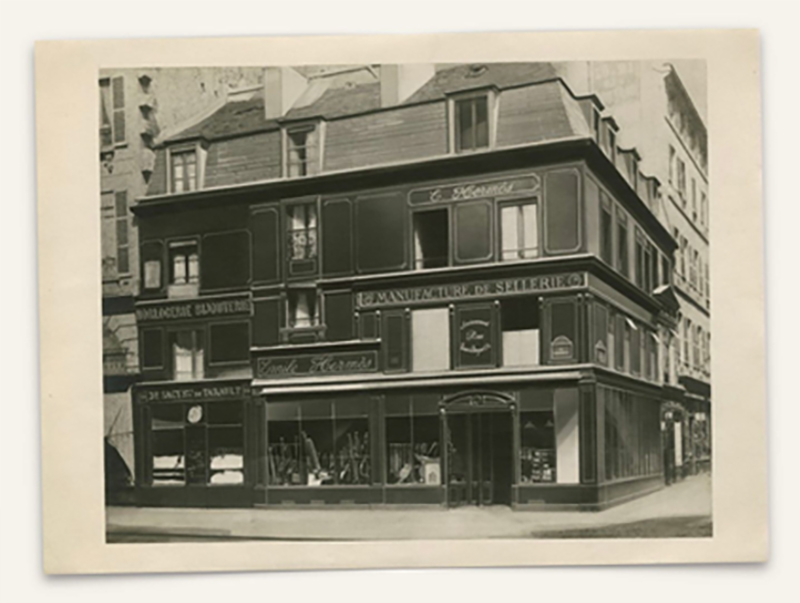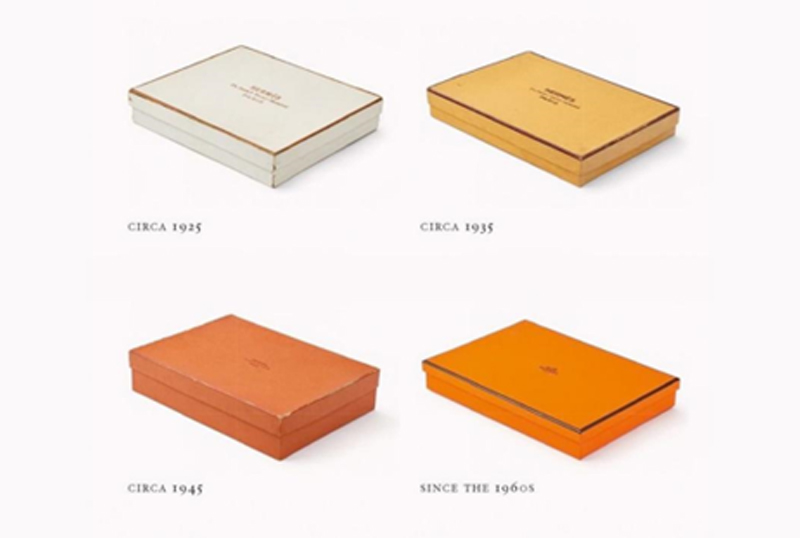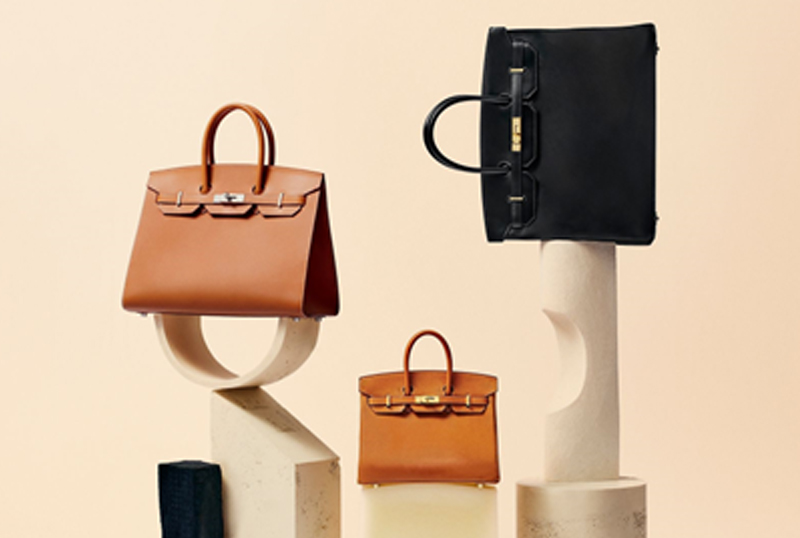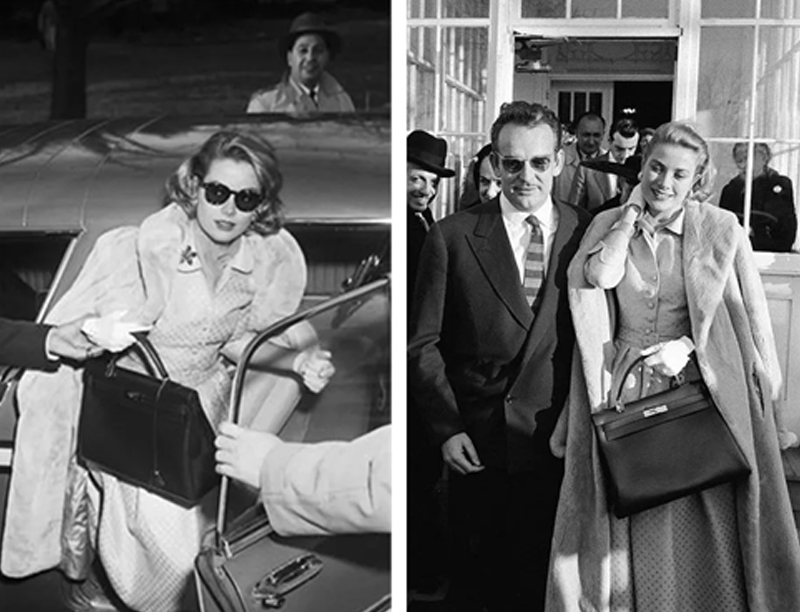The Gluttonous Giant of Luxury: A Story of Hermès’ Unyielding Legacy
In the world of luxury, there exists a gluttonous giant, devouring countless big-name brands. Dior, Louis Vuitton, Bulgari, and over fifty others have not escaped its grasp. However, there is one brand that has stood tall and unyielding in the face of this giant: Hermès. Today, let's delve into the story of how Hermès grew from a small workshop to become a global symbol of luxury.
Founding and Early Years
This story begins in the 1820s, an era before automobiles, when horses were the primary mode of transportation. In a German military camp, there was a horse trainer who, apart from training horses, took it upon himself to repair and replace horse gear. Everyone in the camp called him the "horse fanatic." His son, Thierry, was deeply influenced by him, developing a love for horses and learning the craft of saddle-making from his father. After his father passed away, Thierry returned to France and opened a harness shop in Paris under his own name. Thus, in 1837, Hermès was born.
Like many entrepreneurs, Thierry's journey was not a smooth one. He pursued perfection in every piece, insisting that even a small rivet should be flawless. A single saddle could take 20 to 40 hours to complete. While this dedication earned Hermès a reputation for "slow production," Thierry remained steadfast in his principles, and his persistence eventually paid off. After a royal carriage accident, aristocrats began paying more attention to the safety of horse gear. As a result, Hermès gradually gained favor and even caught the attention of Napoleon III.
Development Over Time:

Forty years later, Thierry’s son, Charles, moved the flagship store to the bustling Faubourg Saint-Honoré in Paris, further expanding Hermès' influence. However, with the advent of automobiles, carriages gradually became obsolete. At this point, the brand was passed to the third-generation leader, Émile-Maurice Hermès. While he sought to adapt to the changing times, he remained committed to Hermès' craftsmanship and artisanal values. In the 1920s, the brand introduced its first handbag, and in the following decades, launched several iconic models, such as the Kelly and Birkin bags. Hermès not only diversified its product line but also solidified its position as a high-end luxury brand.After Émile-Maurice’s death, the Dumas family, led by his son-in-law, took over the brand, ushering in a new phase of growth. The Dumas family not only preserved tradition but also expanded into scarves, perfumes, suits, and other lines. In 1993, Hermès successfully went public.
A Major Crisis
When Hermès announced its public listing, Bernard Arnault, CEO of LVMH, who had long coveted Hermès, initiated a hostile takeover. Through complex financial maneuvers, Arnault became Hermès’ largest single shareholder, bringing him dangerously close to controlling the brand. Faced with this sudden threat, the Hermès family swiftly acted, consolidating 50.2% of their shares into H51, a holding company, and decreed that these shares could not be sold for 20 years. Though this decision was difficult, it ultimately helped Hermès retain control over its core operations.
Decoding the Brand’s Symbols
Hermès’ logo, like its brand story, is steeped in history and cultural significance. In its early days, Hermès did not have its now-iconic horse-drawn carriage logo. This emblem, which symbolizes the brand’s identity, was inspired by Alfred de Dreux’s 19th-century painting, Duc attelé, groom à l’attente (Horse and Groom Waiting).This painting was part of Émile-Maurice Hermès' personal collection and was chosen as the brand’s logo around 1945. The original painting is now housed in Hermès’ museum in Paris. The carriage in the logo, notably devoid of a passenger, captures a sense of anticipation, symbolizing a warm welcome to its esteemed clientele.

The Brand Color
Interestingly, Hermès’ signature orange color was a beautiful accident. In its early days, white was the dominant color for luxury packaging, symbolizing nobility and prestige. Hermès initially adopted white for its packaging as well. However, during World War II, white packaging material became scarce. As a temporary solution, Hermès switched to orange, a color that was readily available at the time. This improvisation not only solved the material shortage but also inadvertently created a striking and unique brand image.Today, the iconic Hermès orange has become synonymous with the brand. It is not only a recurring feature in its packaging and advertising but has also been incorporated into the design of every product, making Hermès stand out among luxury brands.

Iconic Products
· Birkin Bag
One of Hermès’ most iconic bags, the Birkin, was originally designed for British actress Jane Birkin. It is a structured bag with dual handles, and every Birkin is handcrafted, taking an artisan an average of 48 hours to complete. Due to its complex craftsmanship, it holds incredible value as a collectible.

In the world of Birkin, size does not equate to price—quite the opposite. Smaller sizes and rarer materials command higher prices. For instance, petite Birkins measuring 30cm to 45cm are incredibly valuable. In terms of materials, options range from common leathers like calfskin and lambskin to more exotic skins like crocodile, ostrich, and lizard.

The most coveted of all is the diamond-encrusted Himalayan crocodile Birkin, which is priced at $380,000 (over 2 million CNY). This bag is not just a symbol of wealth but a perfect fusion of art and craftsmanship.

· Kelly Bag
The Kelly bag is named after Grace Kelly, the Princess of Monaco and Hollywood actress. In 1956, an iconic photo of Kelly using an Hermès bag to hide her baby bump graced the cover of Life magazine. This moment catapulted the bag to worldwide fame, and it has since been lovingly referred to as the Kelly bag.

The Kelly comes in a variety of sizes and materials, with over 209 colors available, catering to a wide range of tastes.

· Constance Bag
The Constance bag is a small, structured shoulder bag known for its distinctive "H" clasp. Introduced in 1969, it was named after its designer’s unborn child. Each Constance bag is meticulously crafted, taking 16 hours of work and involving the precise assembly of nearly 50 components. The Constance is available in a variety of colors and sizes, and each one is considered a work of art.

It is also one of Hermès’ most recognizable bags, thanks to its oversized "H" logo. The Constance is both chic and casual, making it the perfect companion for a modern, fast-paced lifestyle. Due to its limited availability, the Constance is even harder to acquire than the Kelly or Birkin, making it a favorite among celebrities and fashion bloggers.
· Hermès Scarves
Hermès’ scarves are another hallmark of its luxury status. Known for their vibrant colors and patterns, Hermès scarves are masterpieces of both art and craftsmanship. The silk used for these scarves comes from the cocoons of a rare Brazilian silkworm. The production process takes over 24 months and involves numerous stages, including design, coloring, screen printing, and hand-rolling the edges.

Each scarf tells a unique story through its design, with over 75,000 different colorways and patterns available. If you’re interested, we can dedicate a future article to the fascinating stories behind Hermès’ scarves.
·The Unique Charm of Hermès Window Displays
Beyond its products, Hermès’ window displays are an integral part of its brand culture. Each season, Hermès showcases its latest products through creative and storytelling displays that leave passersby in awe.


Hermès’ window designs often combine the brand’s classic elements with modern art, highlighting the brand’s unique aesthetic. These displays not only draw the attention of countless onlookers but also become an extension of the brand’s image, illustrating Hermès’ luxury and refinement.
Conclusion
From a small harness workshop to a global luxury giant, Hermès’ journey has been nothing short of extraordinary. The brand’s success is not only due to its exquisite craftsmanship and luxurious products but also its steadfast commitment to tradition and artisanal values.Some may wonder: Isn’t there a saying that wealth rarely lasts beyond three generations? So how has Hermès, with its strong family tradition, prospered for over six generations and counting? The answer lies in the fact that Hermès heirs are involved in the brand’s operations from a young age—starting at six, they participate in factory and store activities to foster a sense of identity and responsibility toward the brand. This inheritance of tradition and craftsmanship has allowed Hermès to not only survive but thrive in the competitive world of luxury.
Hermès is not just a symbol of luxury; it is a testament to the perfect marriage of craftsmanship and art. Every product and design tells a story of refined living, and it is this narrative that has turned Hermès into a legend in the luxury world, a legacy that will continue to be passed down for generations to come.